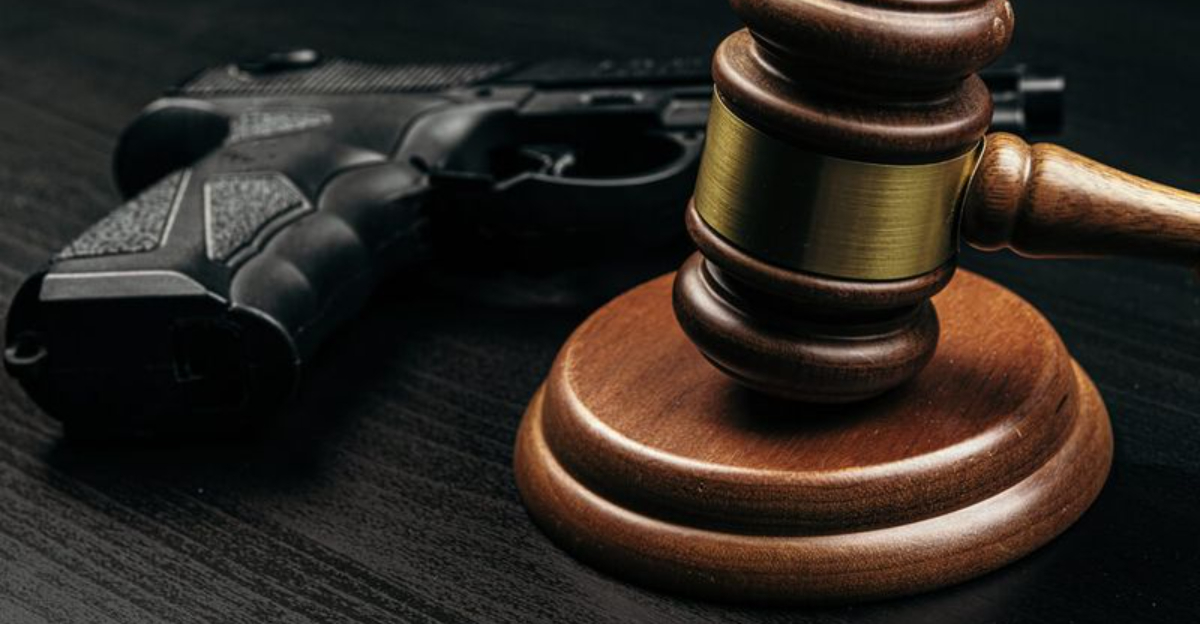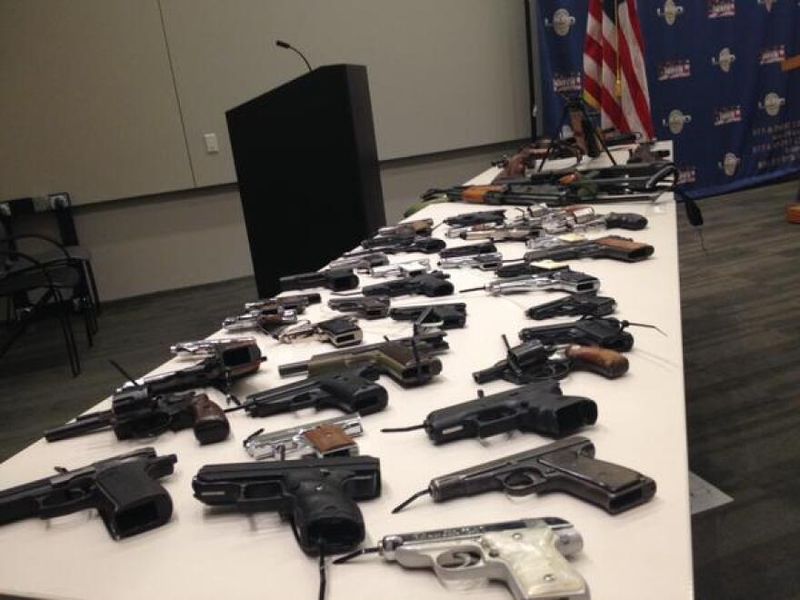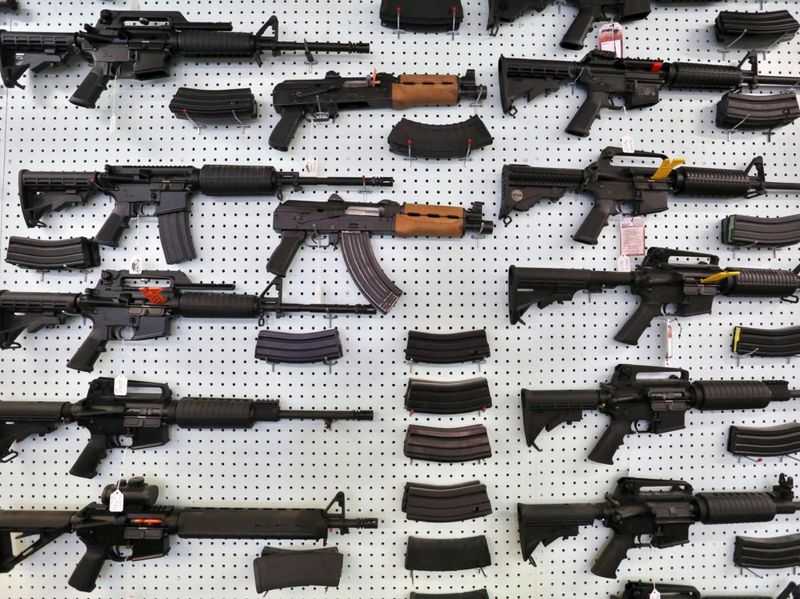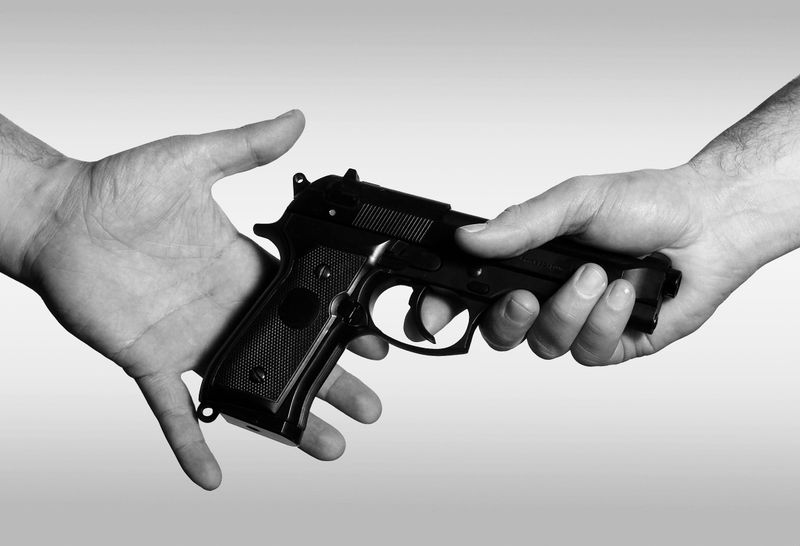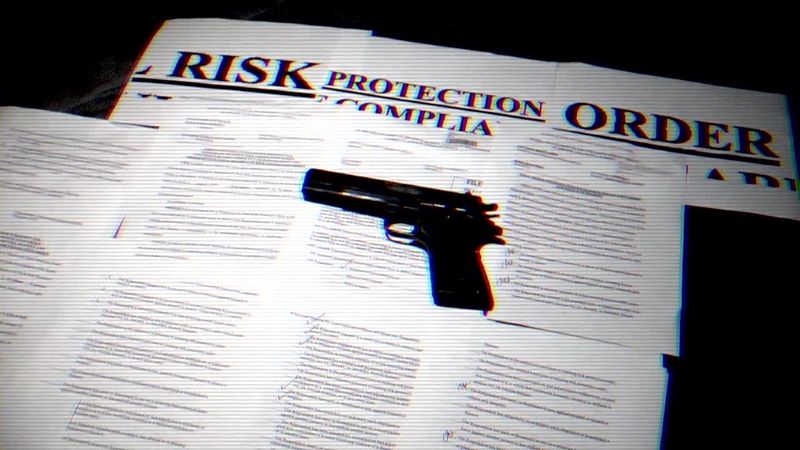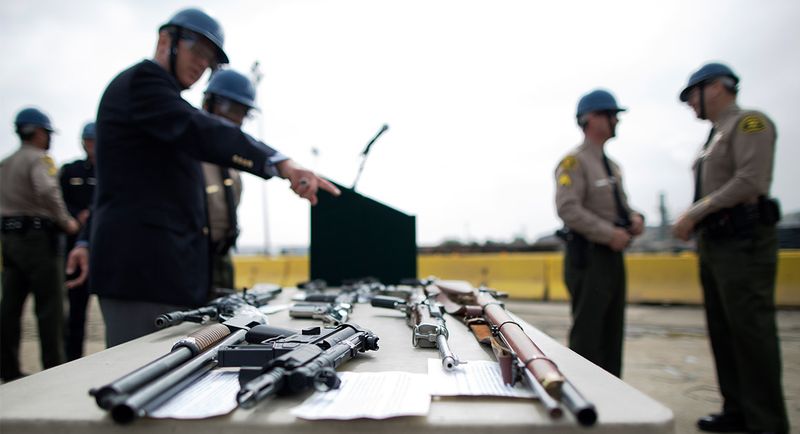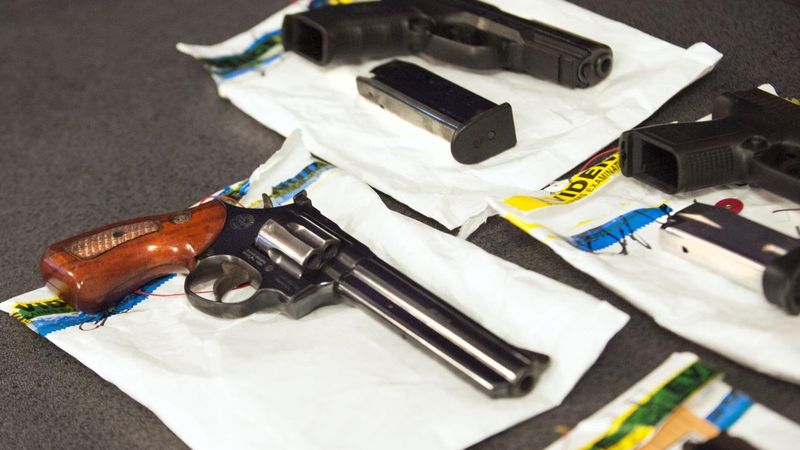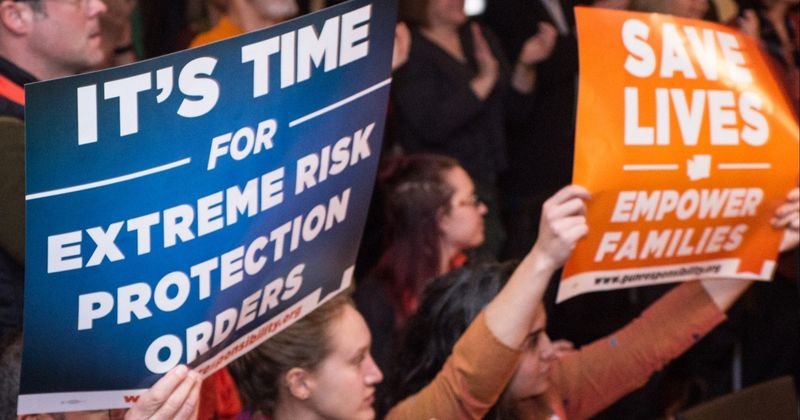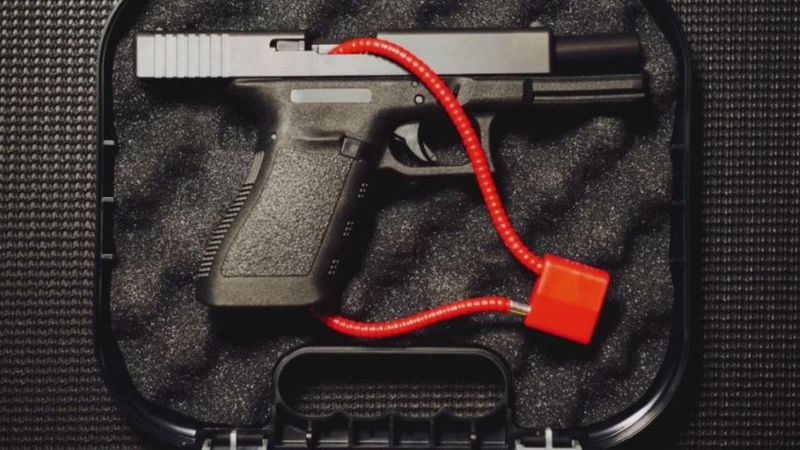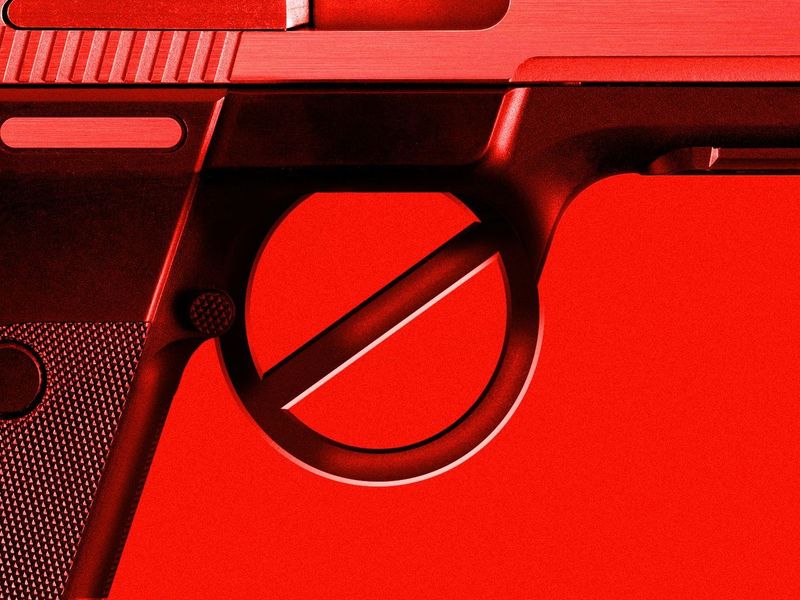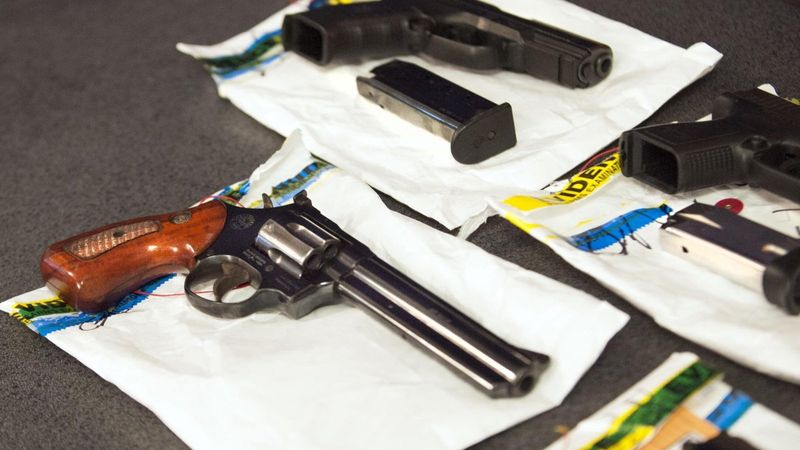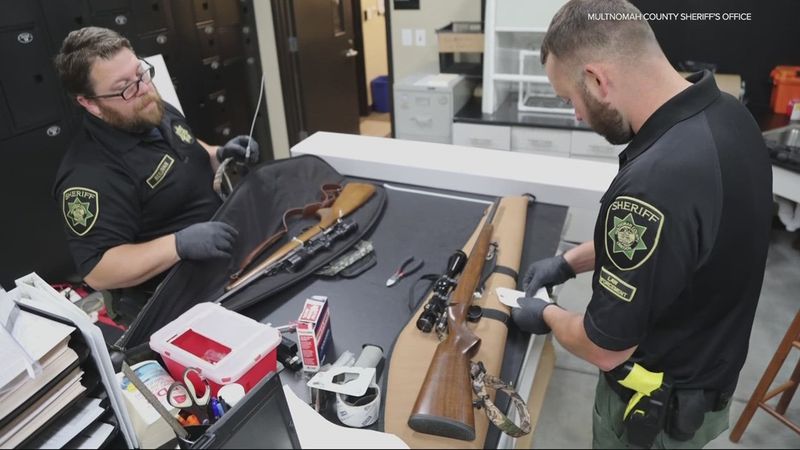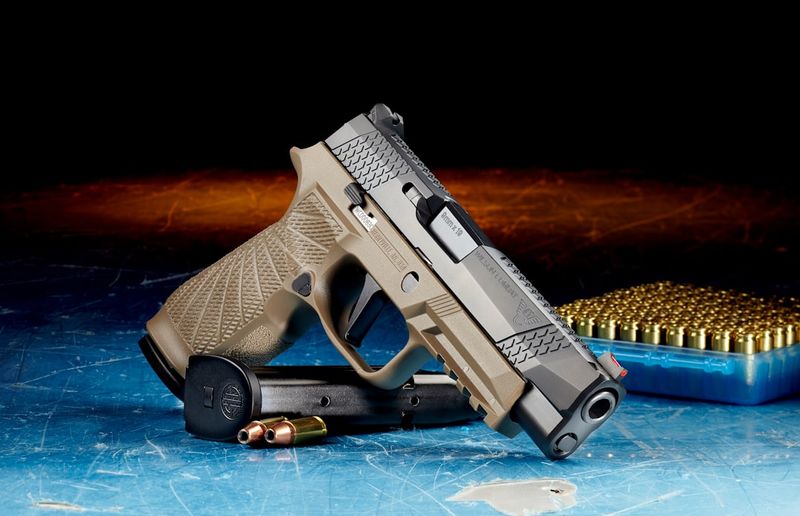When someone poses a potential threat to themselves or others, many states have laws allowing police to take immediate action. These ‘red flag’ or Extreme Risk Protection Order (ERPO) laws let officers temporarily remove firearms without advance warning. The process typically involves a judge’s approval, but the gun owner often learns about it only after their weapons are already gone.
1. California’s Quick-Action Authority
The Golden State pioneered some of America’s strictest gun laws. Under California’s Gun Violence Restraining Order system, police can get a judge’s permission to immediately take someone’s firearms for up to 21 days without telling them first.
Family members can also request these orders, but police have the most direct power. Officers might show up at your door with the temporary order already signed.
After seizure, the court schedules a hearing where you can defend yourself, but your guns remain in police custody until then. California implemented this system in 2016 after the Isla Vista shooting near UC Santa Barbara.
2. Colorado’s Mountain State Mandate
Since 2020, Colorado law enforcement can obtain temporary emergency orders lasting up to two weeks when they believe someone poses a significant danger. The process happens quickly – a judge reviews the evidence and can sign off without the gun owner present.
What makes Colorado’s approach noteworthy is how broadly it defines who can request these orders. Beyond police, family members and even household members like roommates can petition.
The law sparked controversy when some county sheriffs initially declared they wouldn’t enforce it. Most have since changed their stance as the law withstood legal challenges in state courts.
3. Delaware’s First State Firearm Removal
Delaware’s Lethal Violence Protective Order framework gives police significant authority during crisis situations. When officers believe someone presents an immediate danger, they can secure an emergency order lasting up to 15 days.
The person learns about the order only after their guns are already gone. Delaware’s law includes strict penalties for false reporting – anyone who deliberately files a bogus petition faces perjury charges.
Gun owners get their day in court within those 15 days, where a judge determines if the emergency order should become a longer one-year order. Delaware’s system requires clear and convincing evidence, a higher standard than some states.
4. Florida’s Sunshine State Seizures
Following the 2018 Parkland school shooting, Florida enacted its Risk Protection Order law despite being traditionally gun-friendly. The statute allows law enforcement to request temporary ex parte orders lasting up to 14 days without notifying the gun owner first.
Florida’s approach is more restrictive than some states – only law enforcement can petition for these orders, not family members. When police believe someone poses an immediate threat, they gather evidence and present it to a judge.
If approved, officers can immediately confiscate all firearms and ammunition. Florida courts have processed thousands of these cases since implementation, making it one of the most actively used red flag laws nationwide.
5. Hawaii’s Island Intervention System
Hawaii’s isolated geography hasn’t stopped it from implementing some of America’s strictest gun regulations. The state’s Gun Violence Protective Order statute includes emergency provisions allowing police to quickly remove firearms from dangerous situations.
When law enforcement identifies someone as a threat, they can secure a 14-day emergency order without prior notice. Hawaii’s system is particularly thorough – it requires surrendering not just guns but also ammunition and permits.
The island state also maintains a registry of all firearms, making enforcement more straightforward than in states without registration. After confiscation, a full hearing determines whether the emergency order becomes a one-year order.
6. Illinois’ Prairie State Provisions
Illinois’ Firearms Restraining Order law gives police powerful tools during crisis situations. Officers can obtain 14-day emergency orders allowing immediate gun seizure without advance warning to the owner.
What makes Illinois’ approach notable is its broad definition of who can request these orders. Beyond law enforcement, family members, household members, and even dating partners can petition courts.
The Prairie State requires petitioners to sign affidavits under penalty of perjury, discouraging false claims. After the initial seizure, Illinois courts schedule hearings where gun owners can present their side before judges decide whether to extend orders to six months.
7. Indiana’s Hoosier State Safeguards
Indiana pioneered emergency gun seizure laws long before most states, enacting its “Risk-Warrant” statute back in 2005. The Hoosier State approach differs significantly from typical red flag laws – police can seize firearms without a warrant if they have probable cause to believe someone poses an imminent threat.
This gives officers extraordinary on-the-spot authority during crisis situations. After confiscation, police must file a written statement with the court explaining their actions.
Indiana’s system includes a unique feature – if courts later determine the seizure was unjustified, the state must pay the gun owner’s legal fees. This built-in accountability mechanism helps balance public safety with gun rights concerns.
8. Maryland’s Chesapeake Bay Confiscations
Maryland’s approach to emergency gun seizure includes an unusual provision for after-hours situations. When courts are closed, a commissioner can issue interim ex parte orders lasting up to 7 days, allowing police to immediately remove firearms without prior notice.
This system ensures 24/7 coverage for crisis situations. Maryland’s law also casts a wide net regarding who can petition – law enforcement, family members, healthcare professionals, and even certain coworkers can request these orders.
The state tracks and publishes detailed statistics about ERPO implementation. Since enactment in 2018, Maryland has processed hundreds of these orders annually, with suicide prevention being the most common justification cited in petitions.
9. Massachusetts’ Bay State Blockades
Massachusetts implemented its Extreme Risk Protection Order statute in 2018, allowing judges to grant emergency ex parte orders lasting up to 10 days. These orders authorize law enforcement to immediately confiscate firearms without advance warning.
The Bay State’s approach includes strict standards – petitioners must demonstrate that the subject poses an immediate risk of causing harm. Massachusetts also requires police to provide storage receipts for all confiscated items.
Gun owners face additional hurdles – even after emergency orders expire, they must separately petition to restore their firearms licenses. This two-step process makes Massachusetts’ system among the most comprehensive in preventing dangerous individuals from quickly regaining access to weapons.
10. Michigan’s Great Lakes Gun Grabs
Michigan’s relatively new ERPO statute enables police to request immediate emergency orders when responding to dangerous situations. Officers can secure judicial permission to seize firearms on the spot before the subject receives any notification.
The Wolverine State’s approach includes specific protections for gun owners. False reporting carries serious penalties, including potential felony charges for knowingly filing false petitions.
Michigan also mandates secure storage of confiscated weapons to prevent damage. After seizure, courts must schedule full hearings within 14 days where gun owners can challenge the order. These hearings determine whether temporary seizures extend to one-year prohibitions or weapons are returned.
11. Nevada’s Silver State Seizures
Nevada’s Order for Protection Against High-Risk Behavior law allows police to secure 7-day ex parte orders without notifying gun owners first. The Silver State implemented this system in 2020 after contentious legislative debates.
Nevada’s approach includes an unusual provision – courts must consider whether the person has acquired firearms or ammunition within the previous six months. This helps identify individuals who might be preparing for violence.
The desert state requires clear and convincing evidence before extending temporary orders to longer periods. Nevada also mandates law enforcement to provide transportation assistance for surrendering firearms, removing practical barriers to compliance with these emergency orders.
12. New Jersey’s Garden State Gun Control
New Jersey maintains some of America’s strictest firearm regulations, including its robust ERPO system. Police can petition for Temporary Extreme Risk Protective Orders lasting up to 10 days, during which they can confiscate weapons without warning the owner.
The Garden State’s approach includes digital petition options – law enforcement can file emergency requests electronically, speeding up the process during crisis situations. New Jersey also requires mandatory annual reports on ERPO implementation.
After seizure, gun owners face comprehensive hearings where judges consider factors like history of threats, substance abuse, and recent weapons purchases. These hearings determine whether temporary orders become final one-year prohibitions with possible renewal.
13. New Mexico’s Southwestern Safeguards
New Mexico’s Extreme Risk Firearm Protective Order statute includes temporary ex parte provisions allowing police to quickly remove weapons. When officers identify someone as dangerous, they can secure 10-day emergency orders without prior notification.
The Land of Enchantment’s approach includes mandatory law enforcement training on proper implementation. Police must follow specific protocols when serving these orders to minimize conflict during confiscation.
New Mexico requires courts to schedule hearings within those 10 days where gun owners can defend themselves. The state’s system balances immediate safety concerns with due process protections – if emergency orders aren’t extended at these hearings, firearms must be promptly returned to their owners.
14. Oregon’s Pacific Northwest Precautions
Oregon implemented its ERPO law in 2018, allowing police to request emergency ex parte orders for immediate firearm seizure. When officers believe someone presents an imminent risk, they can secure judicial approval without the subject’s knowledge.
The Beaver State’s system includes unique accountability features. Anyone who files a petition must be available for examination at the subsequent hearing, discouraging frivolous claims.
Oregon also requires law enforcement to provide receipts for all confiscated items and store them properly. After the initial emergency period, courts hold hearings where judges determine whether orders should extend to one year. The state’s data shows most petitions come directly from law enforcement rather than family members.
15. Rhode Island’s Ocean State Ordinances
Despite being America’s smallest state, Rhode Island implemented comprehensive ERPO legislation in 2018. The law authorizes police to obtain 14-day temporary ex parte orders allowing immediate firearm seizure without advance notice.
Rhode Island’s approach includes strict evidence requirements – officers must demonstrate significant danger based on recent threats or acts of violence. The Ocean State also mandates that all confiscated weapons receive proper care during storage.
After seizure, courts schedule hearings where judges determine whether emergency orders should extend to one-year prohibitions. Rhode Island’s system includes appeal rights for gun owners who believe their firearms were wrongfully taken, providing constitutional safeguards within this emergency framework.
